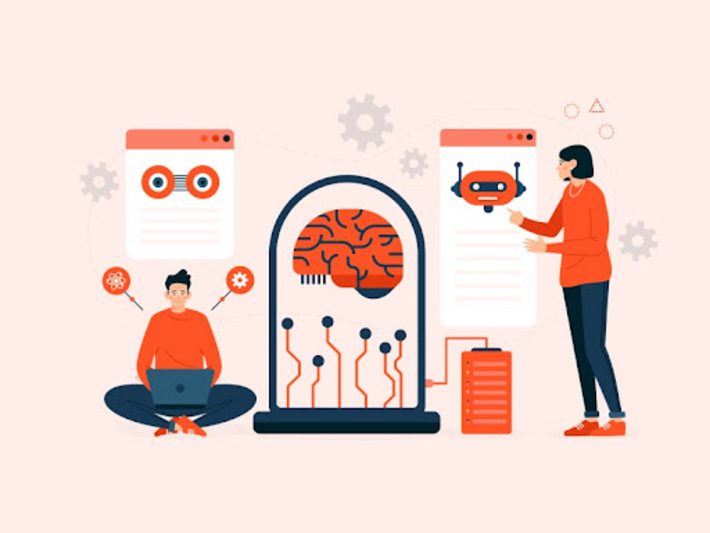
Machine Learning has been around since the early days of computer science and has gained notable traction as more & more people begin to realize how advanced it’s becoming.
Today, Machine Learning algorithms apply to various fields, including some of the most common problems. For example, internet-related areas like data mining, content filtering, and product recommendations.
As per Statista, the most wide-scale application of AI & ML in 2021 lies in enhancing the customer experience with a popularity of 57%. It gets followed by ‘generating customer insights’ with 50% favor.
AI & ML remains at the top of the most disruptive technologies worldwide. Moreover, with new & innovative applications, we are witnessing large-scale adoption of these technologies.
Do you know the top AI & ML use cases for enterprises worldwide?
Here’s what research says:
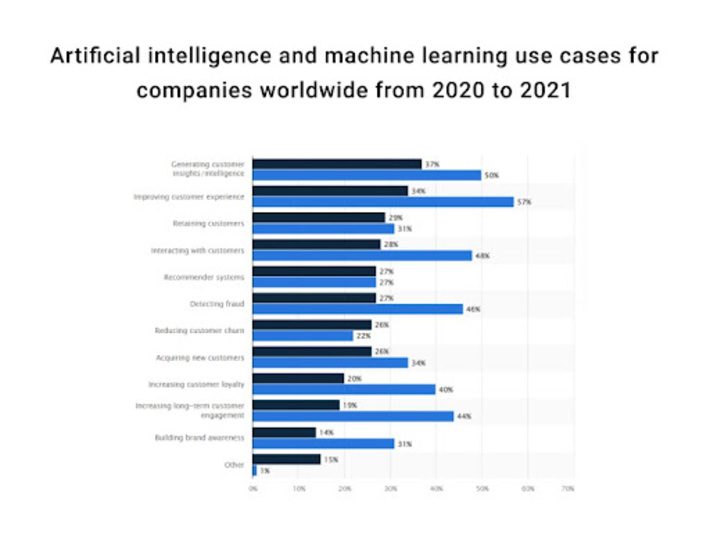
Source: Statista- AI & ML Use Cases from 20202 to 2021
Even though you might not understand all the technical details behind these applications today, you’ve come across multiple of them in your daily life. Yes! not one, but many of them have become an integral part of your everyday life.
Let’s take a look at seven stunning real-life examples of machine learning applications in today’s society.
1) Amazon Using Lex
Amazon has gotten better at understanding what shoppers want before they do. The company in 2017 introduced a new service called Amazon Lex. It uses artificial intelligence to make it easier for companies to add Alexa-like conversational interfaces to their apps and devices.
Lex does all sorts of clever things like understanding natural language questions, detecting sentiment in responses, and deriving meaning from incomplete queries. It’s now convenient than ever for users to add smarts like voice control or even AI assistants into their products via Lex.
2) Facebook Optimizing Content, etc.

Facebook uses artificial intelligence to process and analyze photos, videos, & text. Facebook’s AI analyzes each post you share on your timeline by looking at several factors, including whether you are in any photos or videos in which you get tagged.
For example, suppose you tag yourself in a photo of your friend’s new baby. In that case, Facebook will assume that you like babies because there is an 85% chance that most people who enjoy babies also enjoy seeing other people’s new baby pictures.
This type of analysis helps enhance the user experience. For example, future parents find friends with kids nearby or allow companies to advertise their products based on their friends or family members’ likes.
3) Uber Analyzing Demands

Uber uses machine learning to figure out when a ride is likely to be in high demand, so it can direct drivers toward those locations and maximize its supply while minimizing wait times. The company gathers data from its customers—when they order a car, where they’re headed, how quickly they typically arrive at their destination, etc.—and trains an algorithm on all that info.
The program predicts which areas are most likely to need cars and routes them accordingly. It helps get passengers moving and reduces wasted time for drivers. It is not the only way uber is using AI & ML. Uber employs Ml in the following ways:
- Effectively trimming the gap between the supply & demand
- Diminishing the overall expected time of arrival
- Offering agile routes to drivers
- The worldwide popular uber-pool methodology
4) Apple Enhancing Image Quality

Apple’s iPhone uses machine learning services to detect and focus on faces in photos automatically. When taking a photo, your phone can tell if you’re using an outstretched arm, for example, and will automatically adjust accordingly to prevent shaky pictures.
IPhones know how you’re holding your phone in video mode and will switch to a vertical view. This feature is also available on iPads, so they’ll be more suited for browsing apps on a couch or desk.
Apple’s App Store features hundreds of apps that use machine learning; some examples include apps that predict what emoji you’d like based on your texts and others that utilize augmented reality. The latter technology lets users scan their environment with their device’s camera to add special effects and interactivity—all without needing an internet connection!
5) Microsoft Using Chatbot
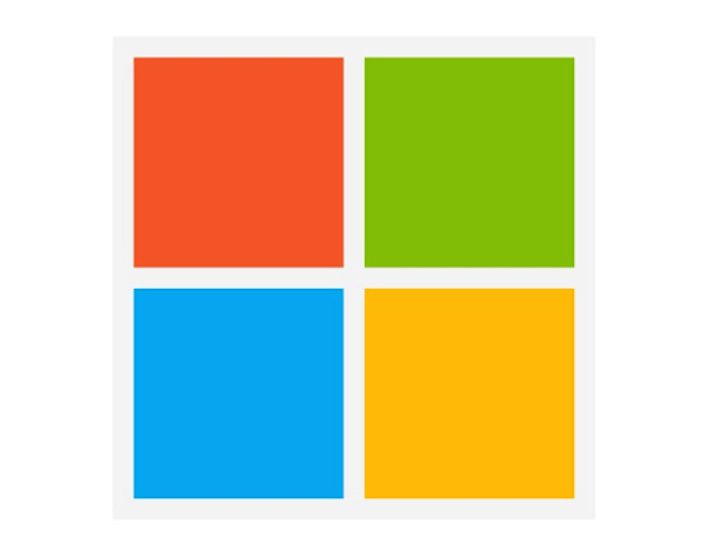
In 2014, Microsoft announced plans to implement artificial intelligence in its customer service processes. The company uses a conversational agent that allows customers to type questions into an online chat window and receive automated responses based on AI-generated scripts.
This chatbot is similar to other virtual assistants you might have used but is adequate for your customer service interactions. If you’ve ever interacted with a bot that asks if you want fries with that, then congratulations—you already know how machine learning can benefit customer service!
6) Google Enhancing Search Experience
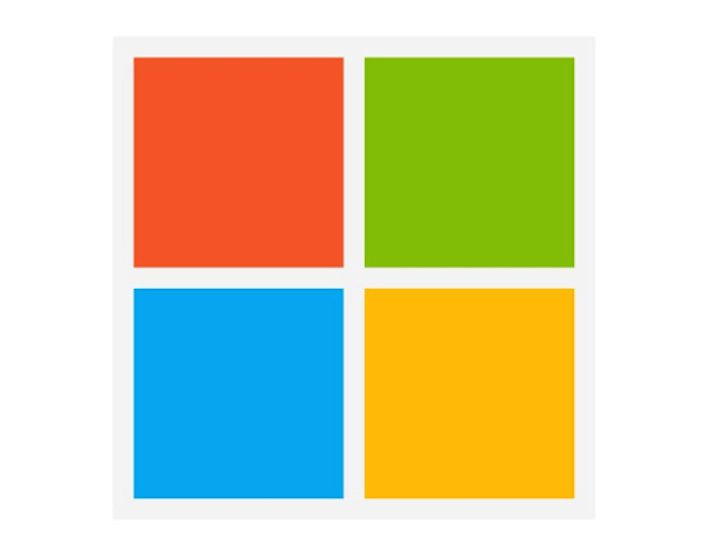
Searching for a solution to a particular problem can lead you down some interesting paths. Take Google, for example. The company applied its algorithm to find content relevant to its users and then used those results as training data for machine learning in other projects, including voice search and automatic image tagging.
Note: Gmail, Google Search, and Google Maps have long been integrated with Machine Learning to offer a more friendly user experience.
Since that initial application of machine learning by Google, people have adopted it as a tool to solve nearly every sort of challenge imaginable.
7) Netflix’s Movie’s Recommendation
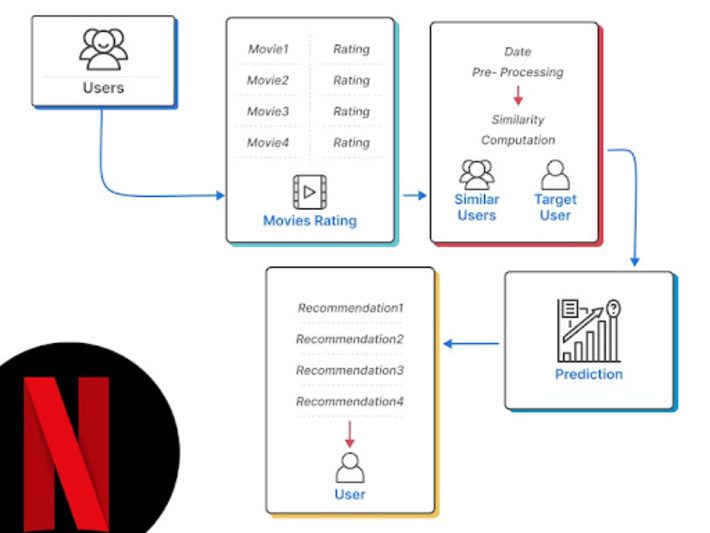
Netflix uses Machine Learning for movie recommendations based on people’s viewing habits. The company has successfully implemented the technology in drawing people to the material they can easily relate to. Moreover, viewers often enjoy shows over it, which they otherwise would have failed to find.
Most Netflix users don’t think about how complex those recommendations are—they know they like being told what to watch. However, a significant deal of work goes on behind the scenes.
Wrapping Up
As you can see, machine learning applications and algorithms are getting used more and more frequently. Almost every industry is taking advantage of it. With all of these real-world applications, what’s not to love about machine learning?
Many people are skeptical about it because they don’t understand how it works, but using examples from various industries can help explain exactly how it works.
Once your audience understands how a machine learning application benefits them or their company, they will be much more willing to embrace AI and hire AI developers than using tech jargon that confuses them.
FAQs
Question: What is Machine Learning?
Answer: Machine learning is a method for data-driven predictive modeling. Simply put, we train computers to learn from patterns in large sets of data. It’s something that’s been around for a period now, but it’s recently enjoyed a bit of a renaissance with significantly cheaper storage.
Its applications are nearly endless:
- Voice recognition software like Siri or Alexa detects words and intonation.
- Dating sites use it to match people up based on interests.
- Amazon uses it to find products you might want by searching through your shopping history.
- Netflix uses it to suggest movies you might like watching.
Question: What is Deep Learning?
Answer: Deep Learning in simple ABC is a subfield of Machine Learning. It is defined as an approach to artificial intelligence that attempts to model high-level abstractions in data through many layers of non-linear transformations. Successive layers learn increasingly complex features, which can then be composed to solve object recognition or speech recognition problems.
These solutions work well in practice because they can model high-level abstractions while being computationally cheap. The effectiveness of Deep Learning has resulted in a proliferation of research and startups within various fields, including computer vision, natural language processing, speech recognition, robotics, and autonomous vehicles.
Question: How Much Does a Machine Learning Developer Charge?
Answer: There are many ways to answer that question. If you’re an employer, salaries vary depending on your location (countries with a higher cost of living tend to pay more), growth projections for your company, or if you want to hire someone in-house or freelance.
Like every other industry out there, though. Skillsets in high demand cost more than ones that aren’t as hot right now.
The standard charges of experienced Machine Learning developers are following:
|
Country |
Hourly Charges (in Dollars) |
|
India |
$20 to $30 |
|
Eastern Europe (Ukraine, Poland) |
$40 to $80 |
|
America |
$100 to $150 |
Question: What Languages are the Most Suitable for Machine Learning?
Answer: Several languages, tools, and frameworks provide machine learning developers with additional flexibility and power. The popular ones include the following:
Python: Its flexibility, ease of use, and excellent scalability make it an ideal choice for programmers at all levels, as well as its growing community of users.
Python has a few key advantages that set it apart from other languages used for machine learning. It’s free and open-source, so you can install and use it on your computer or laptop without paying a license fee or spending money on server space.
Java: Well-known and in-demand, Java is an essential language in the world of machine learning. Thanks to its strong community and availability on nearly every computing platform, it’s an excellent option for both newbies and seasoned coders.
Java is especially well-suited for machine learning because it has built-in libraries for everything you need—from basic data structures to advanced AI algorithms.
R: The R programming language is a standard tool used in many data science and machine learning jobs. The R language is robust, with each function having a substantial number of parameters and procedures, providing flexibility and customization to your datasets.
It makes it challenging to master, however. Still, as a general-purpose programming language developed specifically for statistical computing tasks by statisticians, R provides substantial performance gains over Excel or other spreadsheet programs when used for statistical analysis.
